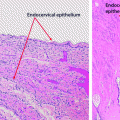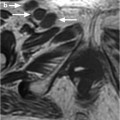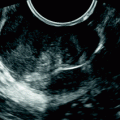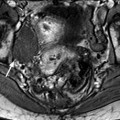Jean Noel Buy1 and Michel Ghossain2
(1)
Service Radiologie, Hopital Hotel-Dieu, Paris, France
(2)
Department of Radiology, Hotel Dieu de France, Beirut, Lebanon
4.1.1 Clinical Findings
4.1.2 Radiologic Findings
4.1.3 Biological Findings
4.2.1 US
4.2.2 MR
4.2.3 CT
4.3.1 Location of the Mass
4.3.2 Morphologic Findings
4.3.3 Vascular Findings
4.3.4 Extension
Abstract
Diagnosis of the nature of a pelvic mass is suggested on clinical, radiologic and biological findings.
4.1 Bases of Diagnosis
Diagnosis of the nature of a pelvic mass is suggested on clinical, radiologic and biological findings.
4.1.1 Clinical Findings
Family genetic inheritance
Previous treatments:
Medical treatment
Surgical and pathologic reports
Radiotherapy chemotherapy antioncogenic molecules
Clinical findings
Day of the menstrual cycle
Hormonal treatment
4.1.2 Radiologic Findings
Comparison with previous radiologic documents
Ultrasound, CT scan, MR, PET scan data
4.1.3 Biological Findings
Plasmatic tumoral markers:
CA125, CA19-9, and ACE, particularly in case of suspicion of ovarian surface epithelial stromal tumors
LDH, beta-HCG, and alpha-fetoprotein in case of suspicion of malignant germ cell tumors
Inhibin in case of suspicion of a granulosa tumor
SCC in case of suspicion of epidermoid carcinoma of the cervix, the vagina, and the vulva
LDH in case of suspicion of uterine leiomyosarcoma
In case of suspicion of ovarian metastases, CA 19-9 in case of GI tract carcinoma, CA 15-3 in case of breast carcinoma
These markers are not only fundamental in the diagnosis of nature of a tumor, but also in the follow-up of a woman operated from a pelvic malignant process.
Findings of an inflammatory process (CRP, white cell count number, sedimentation rate)
Stay updated, free articles. Join our Telegram channel

Full access? Get Clinical Tree








